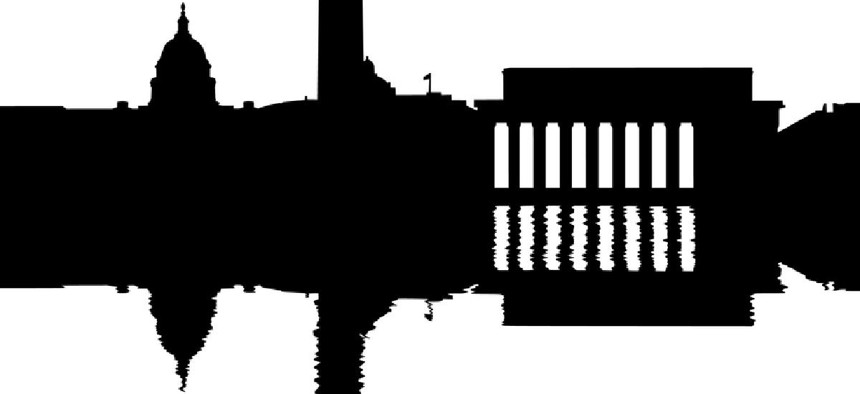
Image via Stephen Finn/Shutterstock.com
What is Innovation in Government?
New methods show innovation comes from the top-down and the bottom-up.
Where does public sector innovation come from? What does it look like? Is it a way of thinking reserved exclusively for the SES and political appointees—or does it come from the ground up? Many emerging practices show it comes from both – and everyone in between.
I attended an event at The George Washington University last week to hear from top agency officials and leading thinkers on the need for innovation. What I heard was a lot of focus on starting from the top – either through goal-setting or organizational realignments. However, not to be ignored are efforts to crowdsource innovation from those in the trenches. Which strategies are most effective and how can agency leaders spur innovation?
Set big fat hairy goals.
“We choose to go to the moon in this decade,” John F. Kennedy said in 1961. Not because it would be easy, he continued, but because it would be hard. With that, he set the mother of all stretch goals—goals that may seem impossible but force you to reach for the stars and at least come close. In the case of Kennedy, stretch goals worked. Apollo 11 touched down on July 20, 1969 – a huge feat for NASA, the federal government, and the American people.
The Obama Administration employed a similar, more localized, strategy by requiring the 24 major agencies to set about five goals that could be achieved within two years and within budget. The intent was to think big. Shelley Metzenbaum, associate director for performance and personal management at the Office of Management and Budget, said, “The evidence from the private and public sector is that stretch goals make a huge difference.” While many agencies did find great success and, reportedly, increased morale and energy around attaining these feats, top agency leadership was responsible for setting goals and holding managers accountable. Many civil servants who were engaged in the details around setting these goals—but visionary leadership at the top made the difference.
Create an environment that fosters collaboration.
New York City Mayor Michael Bloomberg famously knocked down barriers to collaboration, literally, by pulling his deputy mayors and top aides out of their offices and into a large bullpen of cubicles. With the goal of fostering communication, transparency, and cooperation across agencies and departments, this wide-open space of what appears to be chaos, has spurred innovation and effective team building within the city’s complicated bureaucracy.
This took New York chutzpa and open-minded leadership. GSA has taken a similar approach – started by former GSA Administrator Martha Johnson, and continued today by current administrator, Dan Tangherlini.
Innovate…1, 2, 3, GO!
The GSA’s competitions to crowdsource innovative ideas through programs like the Great Ideas Hunt and Challenge.gov created highly publicized platforms for generating great ideas. GSA says it will save over $5 Million through the implementation of just five employee generated ideas. The “groundbreaking” ideas include defaulting printer settings to double-sided and reducing magazine subscriptions. What I love about these is that they’re not big, sexy ideas. They’re practical tactics that can only be generated from employees in the thick of operations. Innovation doesn’t need to be sexy – or come from a seasoned SES – to provide immense value to the taxpayer.
But can innovation come spontaneously from the ground-up? What about feds who work at agencies that don’t have innovation competitions, big goals or collaborative work environments? What about the stifled GS-10 without office or organizational leadership that champions innovation? How do you break an office out of a check-the-box mentality where being simply being compliant is the mark of a job well done? We hear time and again from our readers that they do not feel encouraged to try new processes or that they don’t have permission to fail. So I believe the real challenge is – how do we create a culture in federal agencies that demands innovation from the ground-up?







